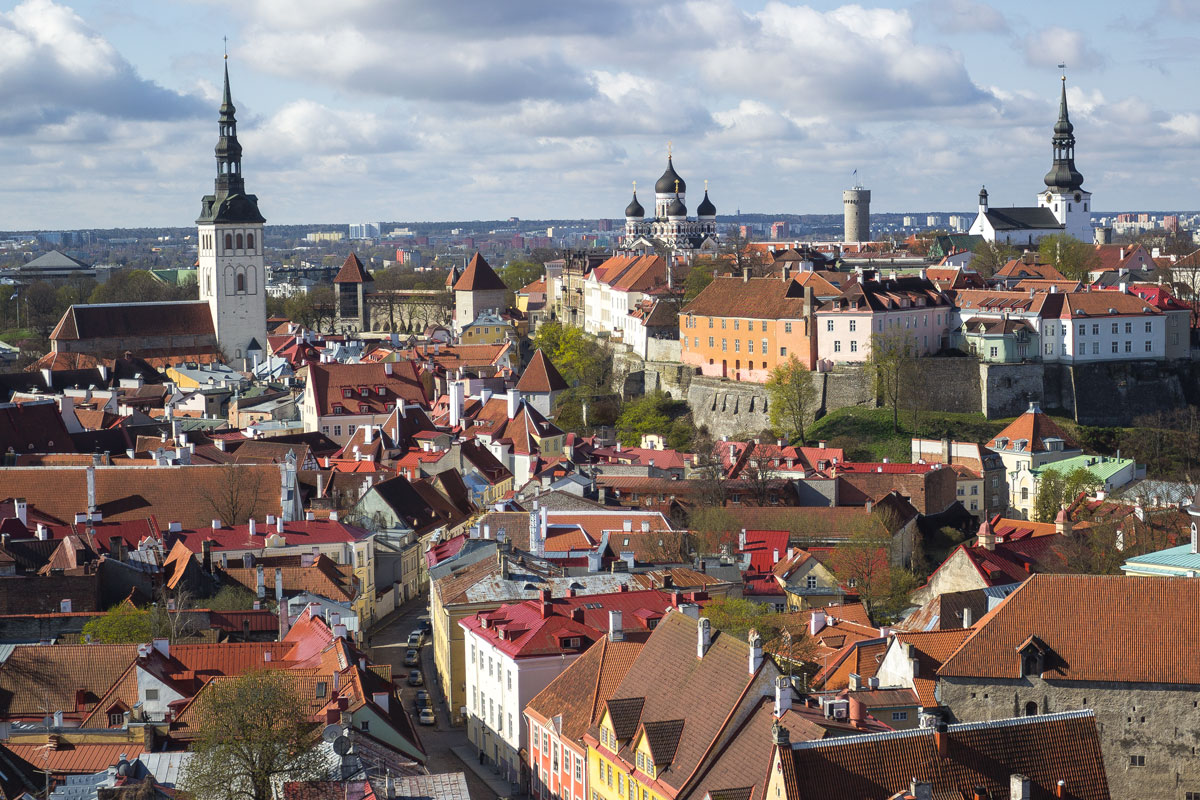Tallinn
Tallinn is a dry Baltic city aspiring to be named the capital of design. It resembles knighthood, with a network of designer stores, charming doors, and some wooden architecture — everything that the capital of Estonia can boast about.
The best thing about Tallinn is its doors.

The doors here are painted in magnificent pastel tones.


Even if it’s a utility door in an alleyway, it is still decorated with soul.

It’s simply beautiful!

Luxury.

Embassy of Russia.

Art Nouveau.

If the building is historical, the door is integrated, but the arch is preserved in place.

Another example: the building was restored, simple windows and a door were installed, while pieces of the historical wall protrude through the plaster like glimpses through time.

If the arch doesn’t need to be filled in, gates of the same color are installed on it. Compare it with Moscow: on the left, there would be a plastic door, and on the right, rusty gates.

Windows are also a separate masterpiece. Shutters are painted in the same pastel tones as the doors. Frames are often left white, and the corners are adorned with black arrow-shaped accents resembling hinge-style elements.

Windows and doors together establish the unique style of the city. Entrance to a cafe.

Entrance to a shop. A modern door was integrated into a centuries-old Gothic arch.

Here the reader must grow tired of looking at doors and ask: what else is good in Tallinn besides doors? But besides doors, there is nothing else good in Tallinn. A few streets in the old town are somewhat decent.



It resembles Riga, but everything seems somewhat run-down.



The main square is extremely boring.

Monstrous cafes on ugly pedestals are scattered throughout the city.

They have these weird school desks instead of tables.

This is just some kind of horror. Like, trying to imitate knighthood.

Trash.

The poorly laid cobblestones shifted and started collecting puddles.

Why did it shift? Because there is no proper drainage system, all the water flows directly onto the sidewalk and road. Moreover, they even make a decorative pathway for it.




The center is full of cars. The sidewalks are narrow, and the drivers are audacious. It’s impossible to walk calmly around Tallinn.


The parking situation is terrible. Here, on the right, there’s a sign: no stopping, and the arrows extend it in both directions along the sidewalk. Meanwhile, a section of the curb is painted yellow, an additional restriction. As a result, everyone parks where the curb is not painted. But the sign is still there. The markings contradict the sign. What takes priority in Estonia? You need to be a road lawyer to park properly.

In Tallinn, they paint everything they can with yellow paint. Right on the cobblestones.


And also, all the road signs here are embedded in a huge, ugly block of cement.

The Old Town from above.

View of the rest of the city. Skyscrapers surround it.

Business Tallinn and residential areas
The business district of Tallinn.

Modern Estonian architecture. Not bad, actually.



Of course, the views are provincial. It’s a mix of Moscow and Rotterdam, somehow.

Tram stop. Readers can learn about Tallinn’s transportation from a separate story.

The residential areas of Tallinn are much worse than those in Riga.

The sidewalks are completely broken.


There are many Khrushchev-era apartment buildings.


Most people in Tallinn live in these gray concrete boxes.


There is no landscaping here whatsoever. In front of the house, everything is cluttered with cars, even though there is plenty of empty space for organized parking, but it remains unused.

Here’s how it all looks up close. Everyone is in their cars.

Someone’s garages.

There are no pathways for pedestrians. Everyone cuts through the grass to make their way.


Children’s playground.

A couple of new houses were found. They have large unified windows without small casement windows, which open inward. Who came up with such an idea? Neither cost-saving nor convenience.

But at least they have tidied up the area in front of them.

Wooden Tallinn
Like in Riga, there are many historical wooden houses preserved in Tallinn.

Just like in Riga, they are all beautiful.

Just like in Riga, many of them have aged significantly.

It’s good that they don’t demolish this beauty, but rather clean and restore it.

Oops, a modern house has snuck in.

Oops, a stone one has appeared. And they all fit in perfectly.

Well, almost all. If you take a walk closer to the business center of Tallinn, then the contrast begins.


Among these skyscrapers, one very beautiful old house once sneaked in.

They decided not to touch it but integrate it directly into the new building. I don’t even know what to say.

Streets.



There aren’t enough epithets to describe all this beauty.

After all, each photograph needs to be captioned somehow.

And there are so many of them that one’s imagination falls short.

And all the houses are different. Not a single one is alike.

And all the houses are incredible.

And the doors. Colorful Tallinn doors.

Cultural kilometer
You read in a guidebook: there is a cultural kilometer in Tallinn — one large art object created from remnants of Soviet buildings, railway tracks, and other miscellaneous junk.
You arrive at the place, and there is some abandoned Soviet cultural center standing there, built for the Olympics.



Behind the cultural center, there is an exit to the pier and a helipad.

Not far away, a hot air balloon looms. It was windy, but otherwise, one can take a ride on the balloon.


And here, sort of, the cultural kilometer begins.

Which presents itself as a gravel path in the middle of nowhere, stretching for 100 meters.

Here, art installations are hanging.

Banksy is taking a break.

And at the end of the path, there is a designer store. That’s it, the entire cultural kilometer. Neither culture nor a kilometer.


